
ATH
Aethir 价格
$0.051660
+$0.0044000
(+9.31%)
从 (UTC+8) 0 点 到现在的价格变化

您感觉 ATH 今天会涨还是会跌?
您可以通过点赞或点踩来分享对该币种今天的涨跌预测
投票并查看结果
免责声明
本页面的社交内容 (包括由 LunarCrush 提供支持的推文和社交统计数据) 均来自第三方,并按“原样”提供,仅供参考。本文内容不代表对任何数字货币或投资的认可或推荐,也未获得欧易授权或撰写,也不代表我们的观点。我们不保证所显示的用户生成内容的准确性或可靠性。本文不应被解释为财务或投资建议。在做出投资决策之前,评估您的投资经验、财务状况、投资目标和风险承受能力并咨询独立财务顾问至关重要。过去的表现并不代表未来的结果。您的投资价值可能会波动,您可能无法收回您投资的金额。您对自己的投资选择自行承担全部责任,我们对因使用本信息而造成的任何损失或损害不承担任何责任。提供外部网站链接是为了用户方便,并不意味着对其内容的认可或控制。
请参阅我们的 使用条款 和 风险警告,了解更多详情。通过使用第三方网站(“第三方网站”),您同意对第三方网站的任何使用均受第三方网站条款的约束和管辖。除非书面明确说明,否则欧易及其关联方(“OKX”)与第三方网站的所有者或运营商没有任何关联。您同意欧易对您使用第三方网站而产生的任何损失、损害和任何其他后果不承担任何责任。请注意,使用第三方网站可能会导致您的资产损失或贬值。本产品可能无法在所有司法管辖区提供或适用。
请参阅我们的 使用条款 和 风险警告,了解更多详情。通过使用第三方网站(“第三方网站”),您同意对第三方网站的任何使用均受第三方网站条款的约束和管辖。除非书面明确说明,否则欧易及其关联方(“OKX”)与第三方网站的所有者或运营商没有任何关联。您同意欧易对您使用第三方网站而产生的任何损失、损害和任何其他后果不承担任何责任。请注意,使用第三方网站可能会导致您的资产损失或贬值。本产品可能无法在所有司法管辖区提供或适用。
Aethir 市场信息
市值
市值是通过流通总应量与最新价格相乘进行计算。市值 = 当前流通量 × 最新价
流通总量
目前该代币在市场流通的数量
市值排行
该资产的市值排名
历史最高价
该代币在交易历史中的最高价格
历史最低价
该代币在交易历史中的最低价格
24 小时最高
$0.056550
24 小时最低
$0.044340
历史最高价
$0.14700
-64.86% (-$0.09534)
最后更新日期:2024年6月12日
历史最低价
$0.024130
+114.09% (+$0.027530)
最后更新日期:2025年4月7日
Aethir 动态资讯
以下内容源自 。
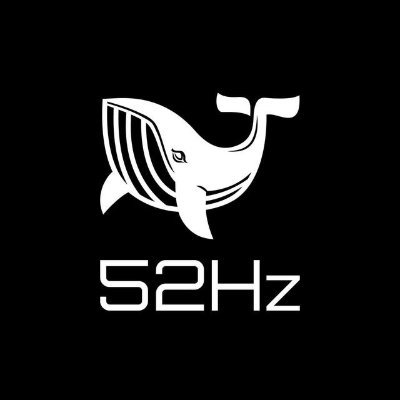
52Hz Database
$USDT 已经铸造但未存入币安,那么这笔钱去了哪里?
众所周知,#Tether 和 MM 在四月底铸造的 $USDT 数量相对较大。当市场出现一些积极变化时,团队之前的见解也是正确的。
那么铸造的钱是否已经完全被市场吸收?推高价格的过程是否已经完成?
币安上的 $USDT 余额数据显示,即使在四月底大量铸造 $USDT 期间,币安上的 $USDT 余额也在持续被提取,甚至超过负 -$1B。
相反,Karen 上的 $USDT 余额显著增加。
=> $USDT 铸造后被存入 Karen 而不是币安。这意味着什么?
关于 Karen 上的 $USDT 余额:
- $USDT 余额在达到峰值后立即被提取,甚至减少到 0。
- $USDT 余额仅在市场上涨/下跌期间强烈波动。
=> 推向 Karen 的 $USDT 是为了积累。目前,$USDT 在达到 #ATH 后并未显著减少 => 积累过程尚未完成。
关于币安上的 $USDT 余额:
- $USDT 余额在十二月初达到峰值,然后急剧下降到 0。
- $USDT 余额将在急剧下降后达到峰值。
- 余额与市场同步波动,峰值和下跌一起出现。
=> 推向币安的 $USDT 是为了推高价格。目前,$USDT 在下降到 -$1B 后尚未达到峰值 => 市场峰值尚未确认。
那么可以得出什么结论?
- 最近期间的 $USDT 铸造仍主要用于积累,这一过程仍在进行中。
- 中长期市场的上升趋势尚未结束。
- 只有当 $USDT 净存入币安时,市场才会真正进入强劲的上升波并确认峰值。
如果这篇文章对你有价值,请点赞、分享 ❤️
查看原文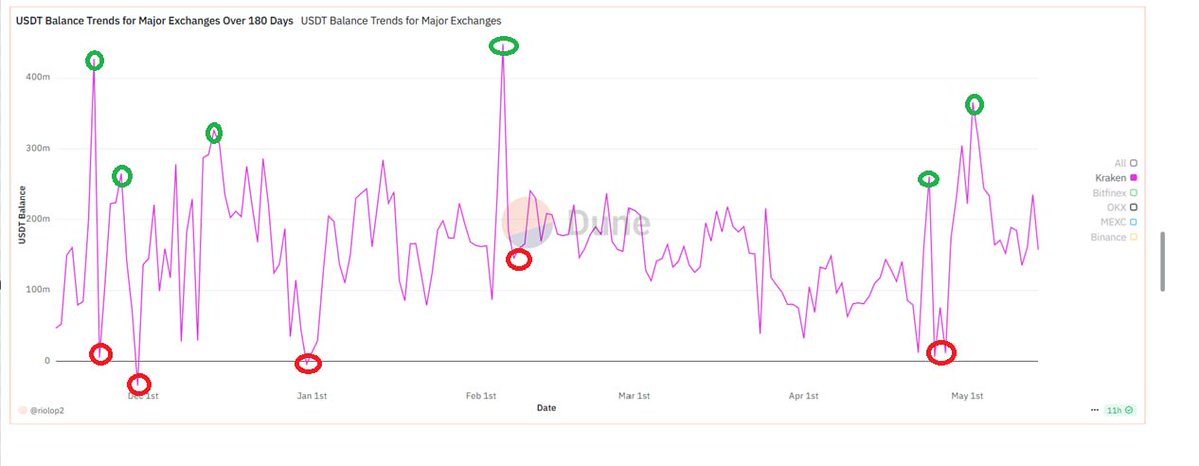
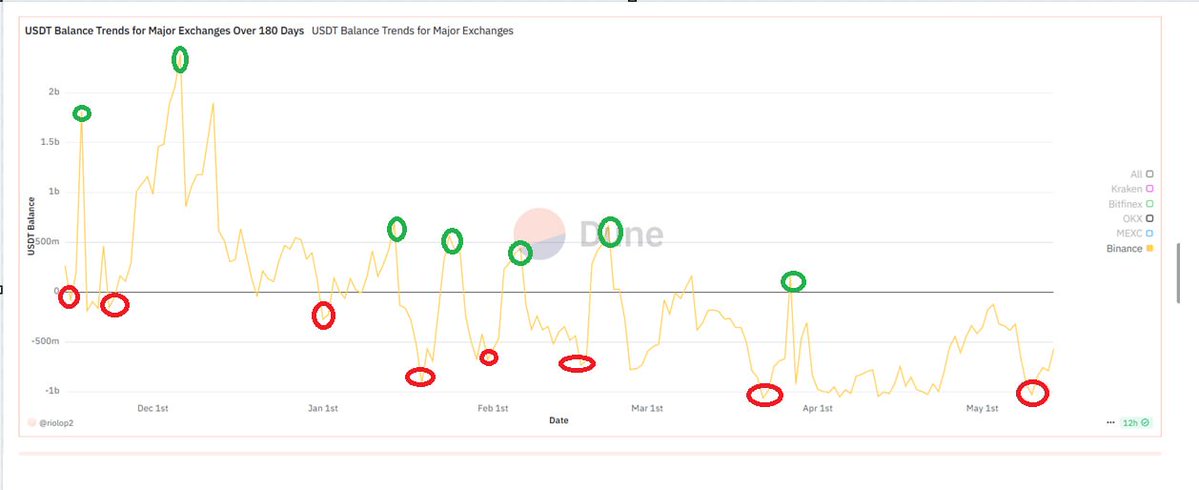
6,174
45

DefiShaka.eth 已转发

DefiMoon 🦇🔊
更新 #2: 贿赂开始上涨 💰📈
@ResupplyFi 在第96轮中不得不提高他们对 reUSD/scrvUSD 池的贿赂,以跟上不断上升的 TVL 和像 @FalconStable 这样的新进入者
如果 $CRV 大幅上涨,尤其是在8月即将减少的排放量的情况下,贿赂竞争可能会大幅增加..... $CVX .....
$crvUSD $reUSD

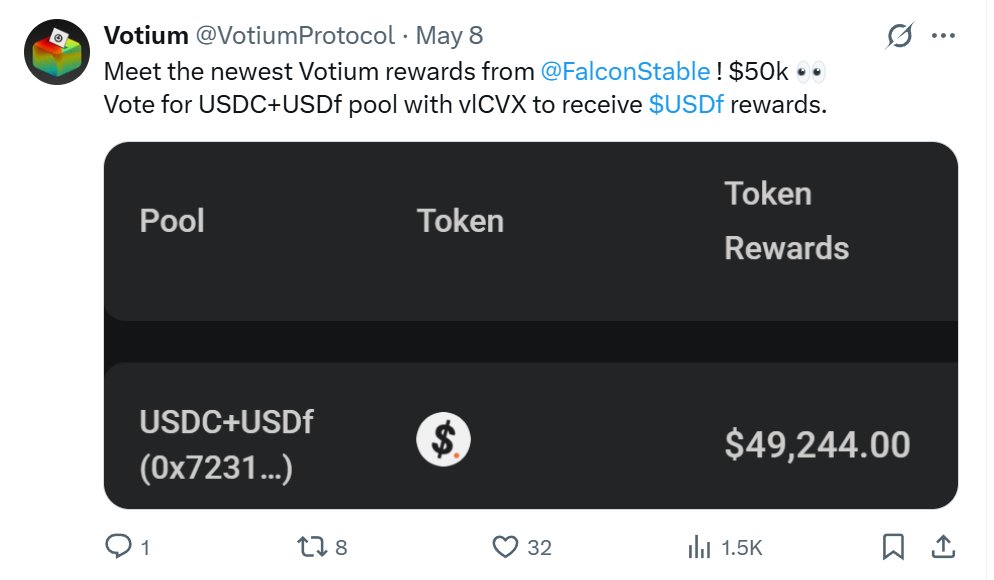

DefiMoon 🦇🔊
更新:$crvUSD 的 pegkeeper 债务今天创下新高,达到 55.6M,使得 crvUSD 的总市值超过 1.75 亿美元 📊📈
自 @ResupplyFi 于 3 月 20 日推出以来,由于新的需求,pegkeeper 债务一直处于单边上涨模式:
大部分资金流入了 $reUSD/scrvUSD 池,因为其 15% 的高 APR(#DeFi 中最高),而自 4 月中旬以来,流入其他 reUSD 池的资金基本持平。
目前,这个池子在所有 @CurveFinance 池中拥有最高的 veCRV 权重:
只要这个池的 APR 保持高位,资金流入应该会继续,crvUSD 的市值也将继续攀升。
😮然而,这个池的 veCRV 权重也必须增长,以维持高 APR 并继续吸引新资本!
因此,要么贿赂金额需要增加,要么 Resupply 需要收购并锁定更多的 $CRV 和 $CVX。
在某个时点,这也会对 Curve 生态系统内的其他协议施加压力,要求它们增加贿赂预算和/或 veCRV/vlCVX 持有量……
请记住,$CRV 的价格也会对整体 APR 产生影响!如果 CRV 在 2025 年剩余时间表现良好,这可能会成为额外的顺风因素。⛵️📈
📊
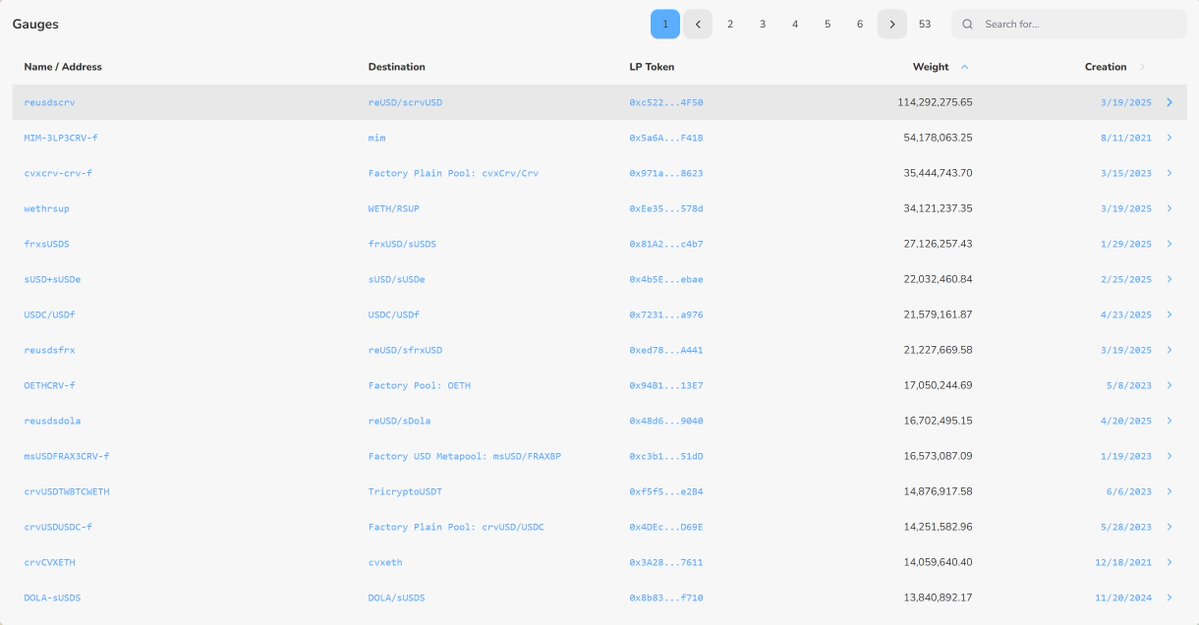

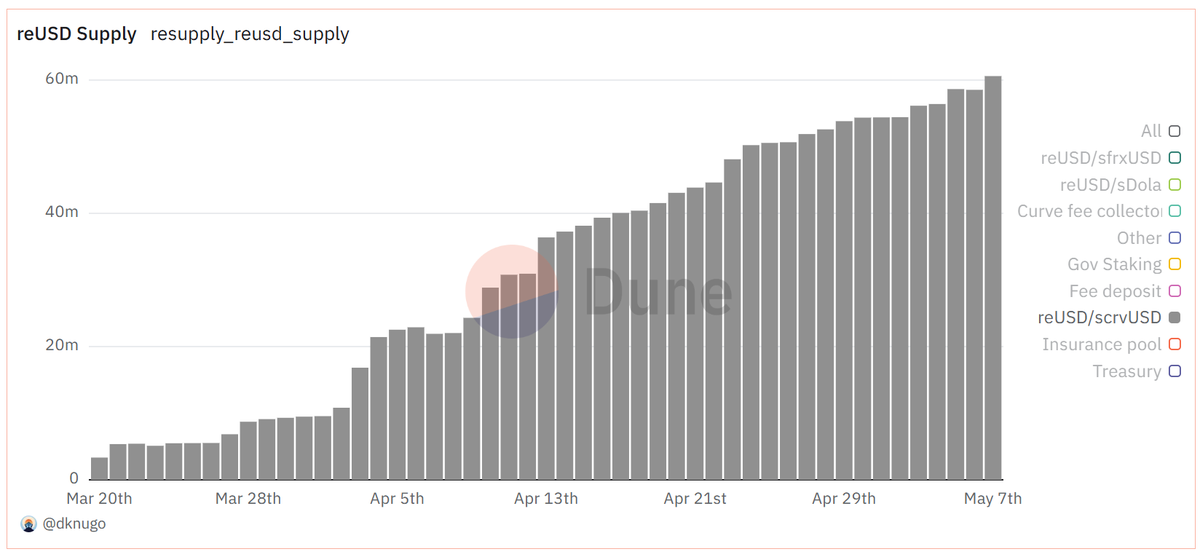

7,405
41
ATH 计算器


Aethir 价格表现 (美元)
Aethir 当前价格为 $0.051660。Aethir 的价格从 00:00 (UTC+8) 上涨了 +9.31%。目前,Aethir 市值排名为第 0 名,实时市值为 $4.69亿,流通供应量为 9,084,674,961 ATH,最大供应量为 42,000,000,000 ATH。我们会实时更新 Aethir/USD 的价格。
今日
+$0.0044000
+9.31%
7 天
+$0.019340
+59.83%
30 天
+$0.023430
+82.99%
3 个月
+$0.012960
+33.48%
关于 Aethir (ATH)
此评级是欧易从不同来源收集的汇总评级,仅供一般参考。欧易不保证评级的质量或准确性。欧易无意提供 (i) 投资建议或推荐;(ii) 购买、出售或持有数字资产的要约或招揽;(iii) 财务、会计、法律或税务建议。包括稳定币和 NFT 的数字资产容易受到市场波动的影响,风险较高,波动较大,可能会贬值甚至变得一文不值。数字资产的价格和性能不受保证,且可能会发生变化,恕不另行通知。您的数字资产不受潜在损失保险的保障。 历史回报并不代表未来回报。欧易不保证任何回报、本金或利息的偿还。欧易不提供投资或资产建议。您应该根据自身的财务状况仔细考虑交易或持有数字资产是否适合您。具体情况请咨询您的专业法务、税务或投资人士。
展开更多
- 官网
- 白皮书
- 区块浏览器
关于第三方网站
关于第三方网站
通过使用第三方网站(“第三方网站”),您同意对第三方网站的任何使用均受第三方网站条款的约束和管辖。除非书面明确说明,否则 OKX 及其关联方(“OKX”)与第三方网站的所有者或运营商没有任何关联。您同意 OKX 对您使用第三方网站而产生的任何损失、损害和任何其他后果不承担任何责任。请注意,使用第三方网站可能会导致您的资产损失或贬值。
Aethir 常见问题
Aethir 今天值多少钱?
目前,一个 Aethir 价值是 $0.051660。如果您想要了解 Aethir 价格走势与行情洞察,那么这里就是您的最佳选择。在欧易探索最新的 Aethir 图表,进行专业交易。
数字货币是什么?
数字货币,例如 Aethir 是在称为区块链的公共分类账上运行的数字资产。了解有关欧易上提供的数字货币和代币及其不同属性的更多信息,其中包括实时价格和实时图表。
数字货币是什么时候开始的?
由于 2008 年金融危机,人们对去中心化金融的兴趣激增。比特币作为去中心化网络上的安全数字资产提供了一种新颖的解决方案。从那时起,许多其他代币 (例如 Aethir) 也诞生了。
Aethir 的价格今天会涨吗?
查看 Aethir 价格预测页面,预测未来价格,帮助您设定价格目标。
ESG 披露
ESG (环境、社会和治理) 法规针对数字资产,旨在应对其环境影响 (如高能耗挖矿)、提升透明度,并确保合规的治理实践。使数字代币行业与更广泛的可持续发展和社会目标保持一致。这些法规鼓励遵循相关标准,以降低风险并提高数字资产的可信度。
资产详情
名称
OKcoin Europe LTD
相关法人机构识别编码
54930069NLWEIGLHXU42
代币名称
Aethir
共识机制
Aethir is present on the following networks: arbitrum, ethereum.
Arbitrum is a Layer 2 solution on top of Ethereum that uses Optimistic Rollups to enhance scalability and reduce transaction costs. It assumes that transactions are valid by default and only verifies them if there's a challenge (optimistic): Core Components: • Sequencer: Orders transactions and creates batches for processing. • Bridge: Facilitates asset transfers between Arbitrum and Ethereum. • Fraud Proofs: Protect against invalid transactions through an interactive verification process. Verification Process: 1. Transaction Submission: Users submit transactions to the Arbitrum Sequencer, which orders and batches them. 2. State Commitment: These batches are submitted to Ethereum with a state commitment. 3. Challenge Period: Validators have a specific period to challenge the state if they suspect fraud. 4. Dispute Resolution: If a challenge occurs, the dispute is resolved through an iterative process to identify the fraudulent transaction. The final operation is executed on Ethereum to determine the correct state. 5. Rollback and Penalties: If fraud is proven, the state is rolled back, and the dishonest party is penalized. Security and Efficiency: The combination of the Sequencer, bridge, and interactive fraud proofs ensures that the system remains secure and efficient. By minimizing on-chain data and leveraging off-chain computations, Arbitrum can provide high throughput and low fees.
The Ethereum network uses a Proof-of-Stake Consensus Mechanism to validate new transactions on the blockchain. Core Components 1. Validators: Validators are responsible for proposing and validating new blocks. To become a validator, a user must deposit (stake) 32 ETH into a smart contract. This stake acts as collateral and can be slashed if the validator behaves dishonestly. 2. Beacon Chain: The Beacon Chain is the backbone of Ethereum 2.0. It coordinates the network of validators and manages the consensus protocol. It is responsible for creating new blocks, organizing validators into committees, and implementing the finality of blocks. Consensus Process 1. Block Proposal: Validators are chosen randomly to propose new blocks. This selection is based on a weighted random function (WRF), where the weight is determined by the amount of ETH staked. 2. Attestation: Validators not proposing a block participate in attestation. They attest to the validity of the proposed block by voting for it. Attestations are then aggregated to form a single proof of the block’s validity. 3. Committees: Validators are organized into committees to streamline the validation process. Each committee is responsible for validating blocks within a specific shard or the Beacon Chain itself. This ensures decentralization and security, as a smaller group of validators can quickly reach consensus. 4. Finality: Ethereum 2.0 uses a mechanism called Casper FFG (Friendly Finality Gadget) to achieve finality. Finality means that a block and its transactions are considered irreversible and confirmed. Validators vote on the finality of blocks, and once a supermajority is reached, the block is finalized. 5. Incentives and Penalties: Validators earn rewards for participating in the network, including proposing blocks and attesting to their validity. Conversely, validators can be penalized (slashed) for malicious behavior, such as double-signing or being offline for extended periods. This ensures honest participation and network security.
奖励机制与相应费用
Aethir is present on the following networks: arbitrum, ethereum.
Arbitrum One, a Layer 2 scaling solution for Ethereum, employs several incentive mechanisms to ensure the security and integrity of transactions on its network. The key mechanisms include: 1. Validators and Sequencers: o Sequencers are responsible for ordering transactions and creating batches that are processed off-chain. They play a critical role in maintaining the efficiency and throughput of the network. o Validators monitor the sequencers' actions and ensure that transactions are processed correctly. Validators verify the state transitions and ensure that no invalid transactions are included in the batches. 2. Fraud Proofs: o Assumption of Validity: Transactions processed off-chain are assumed to be valid. This allows for quick transaction finality and high throughput. o Challenge Period: There is a predefined period during which anyone can challenge the validity of a transaction by submitting a fraud proof. This mechanism acts as a deterrent against malicious behavior. o Dispute Resolution: If a challenge is raised, an interactive verification process is initiated to pinpoint the exact step where fraud occurred. If the challenge is valid, the fraudulent transaction is reverted, and the dishonest actor is penalized. 3. Economic Incentives: o Rewards for Honest Behavior: Participants in the network, such as validators and sequencers, are incentivized through rewards for performing their duties honestly and efficiently. These rewards come from transaction fees and potentially other protocol incentives. o Penalties for Malicious Behavior: Participants who engage in dishonest behavior or submit invalid transactions are penalized. This can include slashing of staked tokens or other forms of economic penalties, which serve to discourage malicious actions. Fees on the Arbitrum One Blockchain 1. Transaction Fees: o Layer 2 Fees: Users pay fees for transactions processed on the Layer 2 network. These fees are typically lower than Ethereum mainnet fees due to the reduced computational load on the main chain. o Arbitrum Transaction Fee: A fee is charged for each transaction processed by the sequencer. This fee covers the cost of processing the transaction and ensuring its inclusion in a batch. 2. L1 Data Fees: o Posting Batches to Ethereum: Periodically, the state updates from the Layer 2 transactions are posted to the Ethereum mainnet as calldata. This involves a fee, known as the L1 data fee, which accounts for the gas required to publish these state updates on Ethereum. o Cost Sharing: Because transactions are batched, the fixed costs of posting state updates to Ethereum are spread across multiple transactions, making it more cost-effective for users.
Ethereum, particularly after transitioning to Ethereum 2.0 (Eth2), employs a Proof-of-Stake (PoS) consensus mechanism to secure its network. The incentives for validators and the fee structures play crucial roles in maintaining the security and efficiency of the blockchain. Incentive Mechanisms 1. Staking Rewards: Validator Rewards: Validators are essential to the PoS mechanism. They are responsible for proposing and validating new blocks. To participate, they must stake a minimum of 32 ETH. In return, they earn rewards for their contributions, which are paid out in ETH. These rewards are a combination of newly minted ETH and transaction fees from the blocks they validate. Reward Rate: The reward rate for validators is dynamic and depends on the total amount of ETH staked in the network. The more ETH staked, the lower the individual reward rate, and vice versa. This is designed to balance the network's security and the incentive to participate. 2. Transaction Fees: Base Fee: After the implementation of Ethereum Improvement Proposal (EIP) 1559, the transaction fee model changed to include a base fee that is burned (i.e., removed from circulation). This base fee adjusts dynamically based on network demand, aiming to stabilize transaction fees and reduce volatility. Priority Fee (Tip): Users can also include a priority fee (tip) to incentivize validators to include their transactions more quickly. This fee goes directly to the validators, providing them with an additional incentive to process transactions efficiently. 3. Penalties for Malicious Behavior: Slashing: Validators face penalties (slashing) if they engage in malicious behavior, such as double-signing or validating incorrect information. Slashing results in the loss of a portion of their staked ETH, discouraging bad actors and ensuring that validators act in the network's best interest. Inactivity Penalties: Validators also face penalties for prolonged inactivity. This ensures that validators remain active and engaged in maintaining the network's security and operation. Fees Applicable on the Ethereum Blockchain 1. Gas Fees: Calculation: Gas fees are calculated based on the computational complexity of transactions and smart contract executions. Each operation on the Ethereum Virtual Machine (EVM) has an associated gas cost. Dynamic Adjustment: The base fee introduced by EIP-1559 dynamically adjusts according to network congestion. When demand for block space is high, the base fee increases, and when demand is low, it decreases. 2. Smart Contract Fees: Deployment and Interaction: Deploying a smart contract on Ethereum involves paying gas fees proportional to the contract's complexity and size. Interacting with deployed smart contracts (e.g., executing functions, transferring tokens) also incurs gas fees. Optimizations: Developers are incentivized to optimize their smart contracts to minimize gas usage, making transactions more cost-effective for users. 3. Asset Transfer Fees: Token Transfers: Transferring ERC-20 or other token standards involves gas fees. These fees vary based on the token's contract implementation and the current network demand.
信息披露时间段的开始日期
2024-04-20
信息披露时间段的结束日期
2025-04-20
能源报告
能源消耗
1447.12538 (kWh/a)
能源消耗来源与评估体系
The energy consumption of this asset is aggregated across multiple components:
To determine the energy consumption of a token, the energy consumption of the network(s) arbitrum, ethereum is calculated first. Based on the crypto asset's gas consumption per network, the share of the total consumption of the respective network that is assigned to this asset is defined. When calculating the energy consumption, we used - if available - the Functionally Fungible Group Digital Token Identifier (FFG DTI) to determine all implementations of the asset of question in scope and we update the mappings regulary, based on data of the Digital Token Identifier Foundation.
ATH 计算器



















社媒平台热度